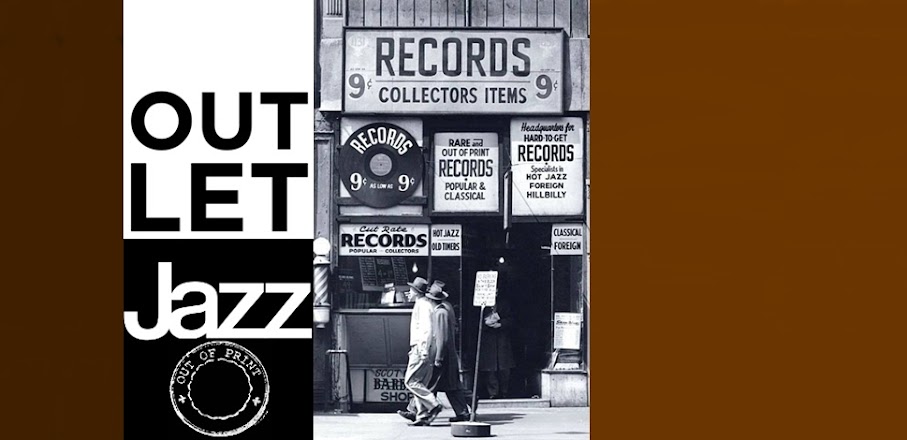One of the wonders of the postwar jazz world has been the sudden rise to dominance in European jazz of Sweden, a country which could scarcely have been found on the jazz map before 1946. The first suggestion that Americans had of Sweden’s jazz potential occurred in the late Forties when the Swedish clarinetist Stan Hasselgard came to this country. Here, it seemed, was the first clarinetist who could challenge Benny Goodman’s long rule as top man on that instrument. So good was Hasselgard, in fact, that Goodman hired him and the young Swedish jazzman suddenly found himself in the unique position of being the only other clarinetist that Goodman has ever featured.
Hasselgard’s career was nipped in the bud when he died in a tragic auto accident, but even in the few brief months that Americans heard him, his presence served to turn attention to Sweden as a jazz source. And there proved to be jazz aplenty there.
Not just jazz in general, either, but a rather special kind of jazz that the Swedes have since made uniquely their own. It is based on the Swing Era of jazz, the first jazz period of which the Swedes were strongly aware. From Swing, the Swedes moved readily to Bop and the later refinements of Bop. No other country is quite so oriented toward modern jazz as is Sweden.
But it is apparently not in the Swedish nature to abandon anything that is good simply because something new and attractive has come along. So they have clung to swing even while they embraced bop and, in consequence, most Swedish jazz has a swingingly modern quality that is found only occasionally elsewhere.
When the jazz world’s attention was directed toward Sweden by Hasselgard’s talent, one of the first major figures it encountered was Arne Domnérus who has maintained his position throughout the Fifties as one of thetop three jazzmen in a country brimming with able jazz musicians.
Domnérus began playing alto saxophone when he was a teenager (he was born in Stockholm in 1924) and one of his earliest experiences was in a young amateur band which included Rolf Ericson, a trumpeter who has played with Woody Herman and Charlie Barnet; Simon Brehm, who became a pioneer Swedish bass star; and pianist Gösta Theselius (who arranged the two full band selections in this collection). By the time he was seventeen, Domnérus was leading a band in a restaurant in a small town in Lapland, possibly the most frigid apprenticeship that any potential jazz star has undergone. For the next ten years he was heard in various Swedish bands playing both alto and clarinet.
In these selections, Domnérus is heard on alto saxophone in all but three instances he plays clarinet. In his early days, when the alto was his only instrument, his style was patterned on the smooth, sweeping flow of Benny Carter. Later he fell strongly under the influence of Charlie Parker but now, as these performances show (the first side was made in 1957, the second in 1956), he has evolved an extremely effective fusion of Parker and Carter which is thoroughly in the vein of the general swing-cum-modern feeling of Swedish jazz as a whole. *Liner notes*
Side 1
1 - Topsy Theme
(Gunnar Svensson)
2 - Relax
(Arne Domnérus)
3 - Frenesi
(A. Dominguez)
4 - For Dave
(Domnérus, Svensson)
5 - Lady Be Good
(George Gershwin)
6 - Round About Midnight
(Monk, Williams, Hanighen)
Side 2
7 - Blue Moon
(Rodgers, Hart)
8 - I Got Rhythm
(George Gershwin)
9 - Don't You Know I Care
(Duke Ellington)
10 - Gone With The Wind
(Allie Wrubel)
11 - Take The ''A'' Train
(Billy Strayhorn)
12 - Creole Love Call
(Duke Ellington)
#1 to #10:
Arne Domnérus (alto sax, clarinet [#2, #5]), Gunnar Svensson (piano), Georg Riedel (bass), Egil Johansen (drums).
Recorded in Stockholm, Sweden, March 14, 1956 (#7, #8, #9, #10); March 10 (#1, #2) and March 19 (#3,#4, #5, #6), 1957.
#11, #12:
Bengt-Arne Wallin (trumpet), Arne Domnérus (alto sax, clarinet [#12]), Rolf Blomquist (tenor sax), Lennart Jansson (baritone sax), Gunnar Svensson (piano), Georg Riedel (bass), Egil Johansen (drums).
Recorded in Stockholm, Sweden, January 27, 1956.


https://www.mediafire.com/file/dv9cr8z5qk8zkxs/AD_swdshmdrnjzz.rar/file
ReplyDeleteInteresante y agradable propuesta, muchas gracias.
ReplyDeleteThanks a lot!
ReplyDeleteMuchas Gracias blbs. Domnérus es un saxofonista que siempre agrada escuchar.
ReplyDeleteMuchas gracias
ReplyDeleteMuchas gracias,
ReplyDeleteInteresting indeed+discovery!
ReplyDeleteGracias!
ReplyDelete